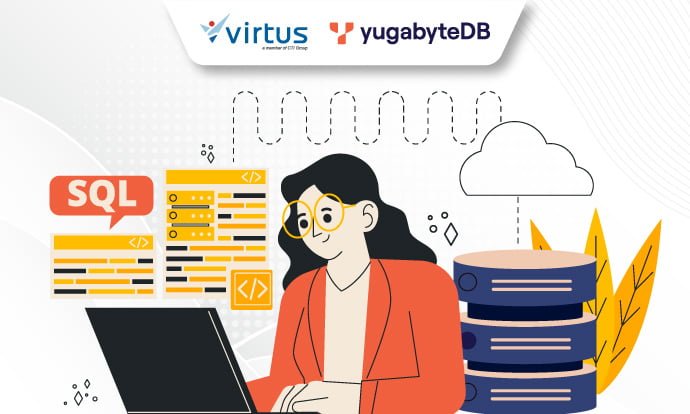YugabyteDB has been in the spotlight in the database world as a powerful alternative to PostgreSQL. With the various challenges that PostgreSQL users face, YugabyteDB comes as an innovative solution that not only makes PostgreSQL easier to use, but also addresses a number of key issues in using this database management system.
Columnist and software engineer Rick Branson once wrote an article titled "10 Things I Hate About PostgreSQL". This article is quite famous and highlights some of the major problems that PostgreSQL users often face. The problems described in the article have actually been known for a long time and stem from the design of storage and transactions in PostgreSQL.
However, what are the 10 most common problems when using PostgreSQL and how can YugabyteDB be a solution to overcome them? Read more in this article.
1. Disastrous Transaction ID (XID) Wraparound
PostgreSQL uses a 32-bit transaction ID (XID) to track transactions. When this 32-bit limit is reached, the database will freeze, which can cause serious problems.
To prevent this, it is necessary to periodically "vacuum" the tables. Vacuuming is the process of cleaning and optimizing tables in PostgreSQL. In addition, this problem can also be solved by using 64-bit integers, but the same problem is still found.
2. Data Loss Likely During Failover
PostgreSQL is not natively designed for distribution, so it lacks ACID (Atomicity, Consistency, Isolation, Durability) support on some servers, leading to potential data loss during failover.
This problem can usually be solved by using an async replica to handle reads and disaster recovery. Using quorum of sync replicas can reduce the risk of data loss but may increase write latency.
3. Inefficient Replication That Spreads Corruption
In PostgreSQL, streaming replication is based on physical replication through page-level Write-Ahead Logging (WAL). However, the claim that WAL "spreads corruption" is not true. In fact, WAL streaming replication is generally more secure than storage-based replication. This claim arises from the situation where non-full page WAL records can cause corruption to block that already exist in the backup (standby) copy.
4. MVCC Garbage Frequently Painful
PostgreSQL writes new rows when updating a single byte in a single column. This can cause table bloat and affect index maintenance performance, especially when using fill factors, requiring regular "vacuuming" to clean up unused data.
5. Process-Per-Connection = Pain at Scale
PostgreSQL is not multi-threaded and creates a new process for each connection. This means that each connection consumes memory, which can be a problem if memory resources on the server are limited. Especially when double buffering is used, the remaining available memory can result in increased I/O.
While connection pools and tools like Pgbouncer can solve this problem, they are not sufficient for microservices. In addition, using Pgbouncer adds additional components that need to be managed.
6. Primary Key Index Takes Up a Lot of Space
In PostgreSQL, rows are stored in heap tables. However, this results in the use of more space and more reads when reading the table, even though only the index is accessed.
7. Major Version Upgrades Can Require Downtime
Upgrading to a major version in PostgreSQL requires downtime, during which the application must be stopped during the upgrade process and subsequent statistics collection. The length of the downtime depends on the size of the database.
8. Cumbersome Replication Setup and Troubleshooting Process
Setting up and troubleshooting PostgreSQL replication can be complicated, often making it quite a challenge to overcome.
9. Ridiculous No-Planner-Hints Dogma
PostgreSQL has historically not used query planner hints, even though these hints are considered useful when Common Table Expression (CTE) materialization optimization is implemented in SQL syntax.
10. No Block Compression
PostgreSQL usually relies on the operating system for file-related tasks, including compression. Despite using ZFS for its features, it still finds it difficult to achieve consistent database performance.
Read More: The Advantages of Modern Database and How It Can Optimize Application Development
How Does YugabyteDB Solve These 10 Problems?
Since there are many complex issues when using PostgreSQL, YugabyteDB has a careful approach to overcome them while ensuring high compatibility with PostgreSQL.
YugabyteDB is a distributed database where all nodes are active-active, so all nodes in the cluster can receive reads and writes simultaneously. This makes YugabyteDB different from other distributed databases, which usually have only one active node. With this advantage, the database can continue to operate even if a node fails.
However, YugabyteDB uses PostgreSQL as one of the core components in its database. In this context, YugabyteDB does not try to recreate the entire system, but rather uses the existing PostgreSQL query layer.
By using the PostgreSQL query layer, YugabyteDB can provide many important SQL features, such as stored procedures, triggers, and functions. YugabyteDB can also support drivers, object-relational mapping (ORM), and the extensive PostgreSQL ecosystem.
This approach allows YugabyteDB to support a wide variety of third-party tools with easy integration because of its compatibility with PostgreSQL. Users can also easily migrate from PostgreSQL to YugabyteDB. Interestingly, YugabyteDB can be deployed in the cloud or on-premises, allowing users to choose the deployment that best suits their needs.
In addition, YugabyteDB not only solves the problems of using PostgreSQL in large and distributed environments, but it is also a powerful solution for users looking for a modern, efficient database that is compatible with the PostgreSQL ecosystem.
Get YugabyteDB Solutions from Virtus
Improve application performance and reliability with YugabyteDB. As an authorized partner of YugabyteDB, Virtus Technology Indonesia (VTI) will help you experience the benefits of a distributed database and a better PostgreSQL user experience.
With a competent and certified IT team, VTI will help you implement YugabyteDB solutions quickly and flexibly.
Don't hesitate to discuss your business IT needs with us today! For more information on YugabyteDB, contact our team by clicking here.
Author: Wilsa Azmalia Putri
Content Writer CTI Group



























